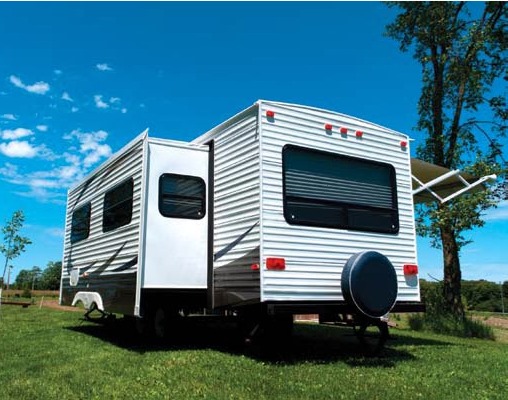 While RV slide-outs provide additional living space, they also come with their own share of mechanical issues and maintenance tasks. Slide outs can be prone to motor failure, misalignment, and leaks, just to name a few. Often times just knowing what model RV you have may not be enough to determine what needs to be done once you've diagnosed your slide out problem. And diagnosing the problem can usually be done without needing to take the RV back to the dealership, but a little investigative work will need to be done. It may even turn out that the problem was caused by faulty wiring or a weak battery, rather than with the slide out itself.
Slide outs are typically electric or hydraulic, with each type having their own pros and cons. Electric motor powered slide outs are most often found on smaller slides. The motor controls the gear system, which can sometimes become overloaded. Electric slide outs are usually easier to repair than hydraulic systems. Hydraulic systems use a pump to trigger a hydraulic ram. These pumps can malfunction if the fluid level is low, which may be due to a leak. Damaged valves are another common cause for pump failure. Hydraulic systems are typically found with larger slides. Being familiar with the type of slide out system you have helps in not only determining the issue, but also in choosing the correct
repair parts. Further information and manuals for various Lippert Components systems and parts are available, including those for In-Wall, Flush Floor, and Above Floor slide outs.
As previously stated, leaks are a common problem with RV slide outs. The seals around the slide outs become less and less functional the older they get, and can allow moisture to come in whether the slide out is extended or not. To prevent damage or other problems due to leaking, seal protectant can be used on both sides of the seal. The seal should also be checked to make sure it has a tight fit, and that there are no gaps at the corners. Replacement seals, such as the
018-314 from AP Products, can help provide leak protection if your existing seals are no longer effective. The 018-314 is 35 feet long, so it can be cut to the length you need, and has a peel-and-stick adhesive for easy installation. Protect All's Slide Out Rubber Seal Treatment creates a coating for your rubber seals to reduce friction and provide UV protection. Excessive friction and UV damage can both lead to your seals drying out and becoming ineffective.
If your slide out gets stuck and has problems extending or retracting, there are some straightforward ways to determine the problem. First make sure the slide out isn't locked in position, then determine if there is a power supply problem. It is possible there may be something wrong with the electrical supply, such as a blown fuse, bad wiring, or a weak battery. You'll need to make sure you have enough power available for the slide out to function correctly. The slide out could also be misaligned or could be blocked by something in the way. You may need to resort to manually operating your slide out, so it is best to become familiar with the process before an issue comes up. RV slide-outs do have a maximum extension and retraction, so going beyond these parameters could cause damage to the system.
When operating your slide out, it should remain level to prevent damage to your RV's floors, as well as to the slide's rollers and seals. The slide out mechanism should also be properly lubricated. Gear racks should be parallel and the rollers should not be too tight or too loose, meaning they shouldn't push into the slide out, nor should they spin freely.
Since most new RVs feature slide outs, becoming familiar with how your system operates and understanding proper maintenance procedures can go a long way toward troubleshooting potential problems.
|